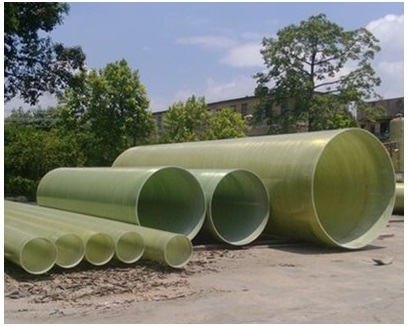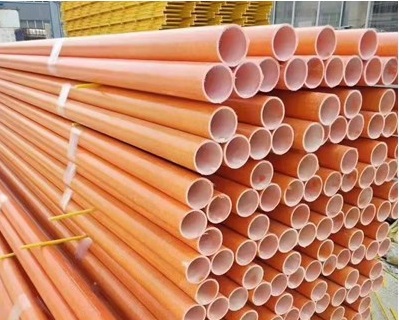Architectural and engineering firms are now able to use a computer software program developed to enhance the design of FRP piping systems. The program makes it easy to perform complex calculations and analyses when designing new FRP piping systems or troubleshooting existing FRP piping systems. WEITONG provides an overview of the important role of FRP pipes
The oil and gas production industry will require higher pressure ratings and larger diameter pipelines to control corrosion problems in production fluid lines (it is not uncommon to "produce" and treat 7 barrels of water for every barrel of crude oil extracted from the ground). In addition to solving corrosion problems, FRP pipelines can be designed with flame retardant additives to reduce flame spread in non-critical or critical areas, coated with intumescent coatings or insulated with intumescent materials, where the coating and paint expand to form a non-combustible foam insulation. The latter system will maintain the suitability of the pipe for at least three hours under flow conditions.
When designing offshore oil production platforms, FRP firewater protection piping is addressing weight issues. By reducing the weight of the support structure (for example, saving up to 750 tons), the weight reduction in the platform design can save the owner $2.00 to $4.00 per pound in construction costs. In areas classified as hazardous, FRP piping can be made of conductive fibers, blended with glass fibers to provide the material's conductivity to ground the system and prevent potential static charge buildup.

Trenchless piping is a rapidly evolving technology where micro-tunnels for new pipelines and slip liners for rehabilitation of existing pipelines do not disturb roadbeds or other above-ground structures.
While tunnel boring has been used for large tunnel projects, microtunneling is a new application for trenchless piping. In microtunneling, FRP pipe is hydraulically jacked up and pushes the cutterhead through the ground. Hundreds of tons of jacking pressure are required to push large diameter pipes of hundreds of feet.
FRP pipe and joint systems have proven to be more cost effective than their concrete counterparts because of their smoother outer surface and lighter weight. These features significantly reduce the required jacking pressure and allow for longer run times than concrete jacking, resulting in lower installation costs and time.
Slip lining is a trenchless method of rehabilitating existing pipes with minimal excavation. New and rehabilitated sewer and drainage pipes are no longer limited to relatively small diameter FRP lining methods. Advances in centrifugal cast FRP pipe technology have been made to produce machined pipes with tight OD tolerances up to 120 inches in diameter. The lightweight and smooth outer surface allows the pipe to be jacked into an existing pipe to repair a leaking concrete sewer line. This rehabilitation system minimizes the jacking pressure required to push the FRP pipe through the existing concrete pipe, even as the sewage continues to flow.

Traditional petroleum marketing facilities use low-cost steel pipe and meet the 2-hour, 2,000° F fire code requirements for handling flammable and combustible materials. While retail facilities have adapted to advances in new materials, such as FRP underground storage tanks and piping and flexible connectors, distribution terminal designers and contractors have been slow to apply non-steel technologies. The following are a few areas where terminal facility designers should consider FRP pipes applications.
Projects related to pollution prevention include containment, recycling, abatement, and wastewater treatment. Concrete piping is not suitable for handling petroleum-related wastewater because of the high leakage rate of available pipe connection methods and because steel pipes corrode the subsurface. Large diameter FRP pipelines can be up to 12 feet in diameter and are designed with leak-free joints. As mentioned above, trenchless new or slip-lined rehabilitation methods are cost effective and minimize operational disruption.
Today, it is becoming increasingly common to mix engine fuel additives at the end of the line. Many of these additives are corrosive to traditional carbon steel. Mixing systems are located on truck loading racks, where underground piping is common, for FRP pipes.
In fire protection systems marked by internal corrosion of steel pipes are plug nozzles and nozzles. In order to resist the effects of corrosion and internal fouling, the metal system requires continuous maintenance. Even so, it is questionable how many metal systems are in effective operating condition at a given moment. FRP fire-resistant material systems have been developed and have proven to be cost effective in many fire protection applications.
For more details about frp pipes and tanks, please contact us, we have high-quality frp products for sale.
Предыдущая страница: Что такое FRP?
Следующая страница: Fiber Reinforced Plastic(FRP) Pipe: Benefits and Defects